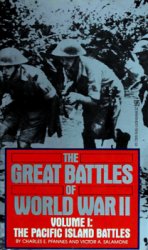The National Negro Convention, which first convened in 1830 under the leadership of Richard Allen (1760-1831), Methodist preacher and founder of the African Methodist Episcopal Church in 1816, was the most successful of three efforts by African-American leaders to form a grand coalition uniting all the major ideological factions in the black community. The Negro Convention, which met off and on from 1830 to 1864, was the most successful because it lasted longer then the subsequent ones in the 1930s and 1970s. The 1830 convention, like the subsequent ones, included proponents of all the major ideological tendencies in African-American politics: conservatives and radicals, integrationists and nationalists, nonviolent “moral suasionists” and advocates of violence. It also attracted the leading African Americans of the time, including Frederick Douglass, Martin Delany, and Henry Highland Garnet. While these diverse personalities and ideologies provided strength to the convention they were also a source of its weakness and its ultimate collapse, since differences over ideology made it difficult for this and other conventions to reach a consensus for a black agenda. Delany and his followers favored emigration and back-to-Africa movements. Douglass was a leader in the abolition movement who favored integrationism, and nonviolence, and moral suasion, while Garnet called for violent slave revolts.
In addition to these differences over ideology and strategy, there were other, continuing disagreements, including the controversy over what the race should be called—African, Colored American, Negro, Oppressed Americans; debates over the merits of building separate black-community institutions such as schools, newspapers, and businesses; and arguments over whether whites should be allowed to participate in the convention. (Whites were included for a time, but eventually the convention voted to exclude them based on principles of black nationalism.) There were also class and institutional conflicts between the middle-class black establishment of ministers, teachers, and businesspeople who tended toward conservatism and integration; and the more radical, less well-off persons who tended toward extremism and emigration. In 1854, the radical emigrationists formed their own convention and began to develop plans for emigration to Haiti and other places outside of the United States. Douglass condemned the emigration convention as providing “proof to the enemies of the Negro that they were divided in thought and plans.” By 1854, the divisions were plain for all to see, and the Negro Convention could not surmount them. The convention therefore dissolved, although it reconvened one last time in 1864 after the Civil War in order to develop plans for Reconstruction.
Further reading: Howard Bell, “National Negro Conventions of the 1840s: Moral Suasion vs. Political Action,” Journal of Negro History 22 (1957): 247-60; Bella Gross, “The First National Negro Convention,” Journal of Negro History 31 (1966): 435-43.
—Robert Smith




 World History
World History









